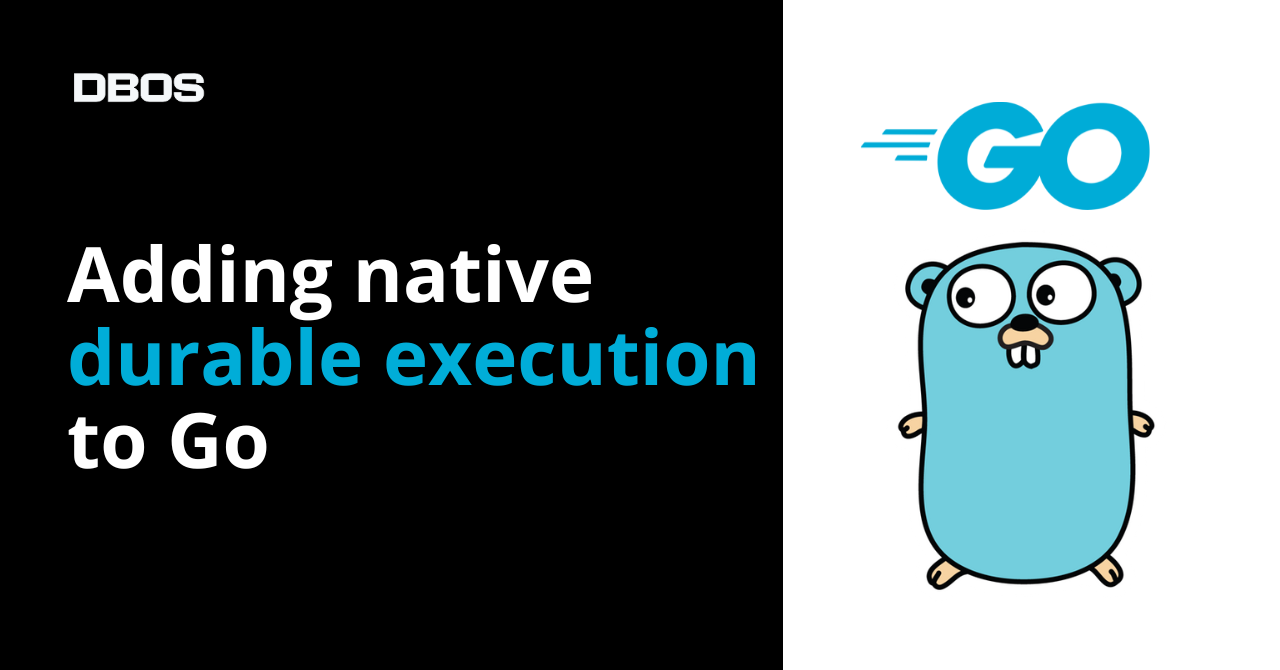
Earlier this month, the DBOS User Group gathered online for the April meeting. Several dozen people joined in to meet with DBOS engineers and other community members. In order to keep the meeting relaxed, we don’t record the event, so people can communicate more freely. But we do take notes! Here’s a write-up:
Product Roadmap
We always provide product roadmap updates during the User Group meetings. DBOS co-founder and architect, Qian Li kicked off the meeting with this overview:

The roadmap generated discussions about:
- Queues support, especially questions about how they could be leveraged for inter-service communication and coordination.
- Graph visualizations - this was requested during the March User Group meeting, so people were happy to see this work underway
- New language support for DBOS Transact - Java and Go remain the top next languages on the roadmap.
If you have questions about the roadmap, please ask us on Discord, or join the DBOS user group!
DBOS Conductor demonstration
Qian Li gave the UG a first look at the new DBOS Conductor functionality. DBOS Conductor addresses one of the most common requests we hear:
“Can I run applications built with the DBOS Transact durable execution library on my own cloud?”
The answer of course has always been “yes” because DBOS Transact is supported on Linux, Windows, and MacOS. DBOS Cloud has been available for people who want an auto-scaling serverless platform on which to host durable backends. For people who want to self-host their durable apps on their own, the new DBOS Conductor is a management interface that facilitates the deployment and operation of DBOS Transact applications running anywhere.
Qian demonstrated the following DBOS Conductor capabilities:
- Connecting a DBOS Transact application instance with DBOS Conductor
- Managing a distributed (multi-instance) DBOS Transact application
- Resuming a durable app and workflow execution following a failure
- Monitoring, re-running, analyzing durable workflows

The demo was followed by DBOS Conductor Q&A:
- There was discussion about DBOS Conductor configuration and security. Peter Kraft explained that DBOS Conductor is designed with security and privacy in mind. It does not store any sensitive data. Workflow state is stored in the user’s application database (or any PostgreSQL-compatible DB).
- Qian explained DBOS Conductor “executors,” which represent instances of a DBOS Transact app under the control of DBOS Conductor. DBOS Conductor is priced on the number of executors, and NOT based on the number of durable workflow steps executed (unlike AWS Step Functions, Temporal, and others).
- People also asked whether DBOS Conductor functionality could run on-premises. Peter explained that it is designed to do so. If that’s a requirement, just contact us to request it.
Explore DBOS Conductor - create a DBOS Pro account
DBOS - Datadog integration demonstration
During the March User Group meeting, someone asked about monitoring DBOS Transact applications with Datadog. In the month that followed, DBOS Head of Customer Solutions, Alex Poliakov built the capability. He demonstrated the integration with Datadog. It works by simply adding a script to config.yaml. On app deploy, the script downloads the OTel collector (otelcol), which collects OTel logs and traces generated by DBOS Transact applications and exports them to Datadog. The integration exports OTel spans and traces (even for nested workflows); metrics can be exported directly to Datadog from your application.
DBOS - Datadog integration documentation.
Other Q&A
After the demos, we opened the meeting up to other how-to questions which included:
- Using DBOS for Interservice communications? Event sourcing, notifications, bussing? Should customers pursue interservice workflows? Peter Kraft confirmed that this is a reasonable use case for DBOS. Durable workflows and queues can indeed coordinate processes and make retries easier.
- There was a request for more detail on how DBOS utilizes SQLAlchemy for durable transactions. Qian mentioned that she’s planning to write a blog post about it.
- Lastly, there was some discussion about configuring DBOS programmatically. Peter Kraft shared the documentation on it: https://docs.dbos.dev/python/reference/configuration
Join us in May
We hope you can join us at the next DBOS User Group meeting. You can join the User Group here and stay up to date on upcoming events and write ups.



